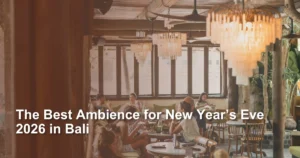Bali is famous for its beaches and temples, but one of the island’s most unforgettable sights is its rice terraces. Before I visited them in person, I had seen countless photos, but standing among the layered green fields felt completely different. The rice terraces are not just beautiful, they are part of Bali’s cultural and spiritual life.
What Makes Bali’s Rice Terraces Unique?
The uniqueness of Bali’s rice terraces comes from a traditional irrigation system called Subak, which has been practiced for over 1,000 years. Subak is more than just farming; it’s a philosophy that blends agriculture, community cooperation, and spirituality. Farmers share water resources fairly, guided by village temples and rituals. In fact, UNESCO recognizes Bali’s Subak system as a World Heritage Site.
What impressed me most is how the terraces combine functionality and beauty. They are designed to maximize water flow across hillsides while creating landscapes that look like giant green staircases. During sunrise or sunset, the terraces glow with colors, and during planting season, the fields reflect the sky like mirrors. Visiting them is not only about scenery but also about understanding how Balinese culture connects deeply to nature.
Best Rice Terrace in Bali You Must Visit
Tegallalang Rice Terraces
Tegallalang, located just a short drive north of Ubud, is the most famous rice terrace in Bali. The dramatic layers of green fields are carved into steep hillsides, creating some of the most iconic photographs you will see from the island. The area is well-developed for tourism, with small cafe and viewing platforms where you can enjoy the scenery. There are also walking paths that take you deeper into the terraces, where you can see local farmers tending the fields. The views are particularly striking in the early morning light when the air is cooler and the crowds are fewer.
Reaching Tegallalang is easy, especially if you are staying in Ubud. It takes about 20 minutes by car or motorbike, and many local drivers offer half-day tours that combine the terraces with nearby attractions like the Goa Gajah temple or coffee plantations. Entrance requires a small donation, and if you plan to explore the walking paths, be prepared for some steep climbs. Comfortable shoes are recommended, and carrying some small change for local farmers who maintain the trails is also appreciated.
Read also : Why Is Bali So Special? Culture, Nature, and What Makes It Famous
Jatiluwih Rice Terraces
Jatiluwih in Tabanan is where Bali’s rice terraces truly come to life. Covering more than 600 hectares, it is the largest rice terrace system on the island and is officially recognized by UNESCO. Unlike the compact and crowded Tegallalang, Jatiluwih offers sweeping panoramas that stretch as far as the eye can see. Walking or cycling through the terraces here feels peaceful, and you can watch farmers planting or harvesting rice depending on the season. The fresh mountain air makes the experience even more refreshing.
Getting to Jatiluwih takes about 90 minutes to two hours from Ubud or Canggu, but the drive itself is scenic, passing through villages and lush countryside. Once there, you can follow marked trekking routes of different lengths, ranging from short strolls to long hikes that last a few hours. Entrance tickets are required, but the money goes toward maintaining the site and supporting the local farming community. There are also local restaurants around the terraces serving Balinese dishes with beautiful views, making it a great spot for lunch.
Sidemen Rice Terraces
In East Bali, Sidemen offers a quieter and more authentic view of Bali’s rice terraces. The fields stretch across wide valleys with Mount Agung towering in the background, creating postcard-worthy scenery. Unlike Tegallalang, which is often full of visitors, Sidemen feels tranquil and untouched. This area is also known for its traditional weaving villages, so you can see not only rice farming but also local artisans creating songket textiles by hand. The combination of cultural heritage and natural beauty makes Sidemen unique.
Reaching Sidemen takes around 90 minutes from Ubud or about two hours from Denpasar. The journey brings you through traditional Balinese villages, and it is best done by car with a driver since public transportation is limited. Once in Sidemen, you can walk through the rice fields on guided treks organized by local guesthouses or explore on your own. Many travelers choose to stay overnight in eco-lodges or villas to experience the calm atmosphere and wake up to the view of rice terraces at sunrise.
Pupuan Rice Terraces
Pupuan, located in West Bali, is often overlooked by tourists, but it is one of the most scenic areas for rice terraces on the island. The fields here roll across gentle hills, and the region is surrounded by clove and coffee plantations. The combination of rice fields with tropical crops gives Pupuan a unique character compared to other terraces. The roads leading here are lined with beautiful views, making it one of the best drives in Bali for nature lovers and photographers.
Traveling to Pupuan requires more time since it is about three hours from Denpasar or Ubud. It is best visited on a day trip combined with other parts of West Bali, such as the coast or nearby waterfalls. The terraces are less commercial, so you will not find many cafes or souvenir shops, but that is exactly what makes the area feel authentic. You can stop at small roadside warungs for local food while enjoying the landscape. A private driver is highly recommended for comfort and flexibility.
Belimbing Rice Terraces
Belimbing, also located in Tabanan Regency, offers wide green terraces that feel calm and far less crowded than Jatiluwih. The area is dotted with small villages, and the fields are framed by coconut trees and jungle, creating a mix of rural charm and wild beauty. For those who enjoy photography, Belimbing provides fantastic angles, especially during sunrise when mist often lingers in the valley. The terraces here feel untouched and timeless, making it a hidden gem for travelers.
The journey to Belimbing takes about two hours from Ubud or Seminyak, and it is best reached by car or motorbike. Once there, you can walk through the terraces freely, though guided tours are available if you want deeper insights into the Subak system and local farming traditions. The village atmosphere is welcoming, and you will often see farmers at work. Unlike more touristy spots, Belimbing does not have large restaurants or organized facilities, so carrying water and snacks is a good idea if you plan to spend a few hours exploring.
Read also : Things to Do in Munduk, Bali: Guide to Waterfalls, Lakes, and Hidden Gems
Bali’s rice terraces are more than beautiful landscapes. They are living traditions that showcase the island’s harmony between nature, culture, and community. From the iconic hills of Tegallalang to the endless fields of Jatiluwih, each terrace has its own charm and story. Sidemen, Pupuan, and Belimbing may not be as famous, but they offer peace and authenticity that many travelers now seek.
Visiting these terraces gave me a deeper understanding of how Balinese life is closely tied to rice farming and the Subak system. Whether you explore them on a short trip from Ubud or dedicate a day to discovering the hidden gems of Tabanan and East Bali, the rice terraces are essential for experiencing the heart of the island.










